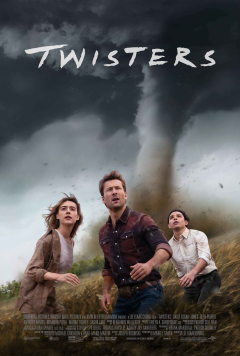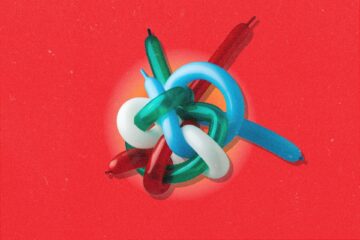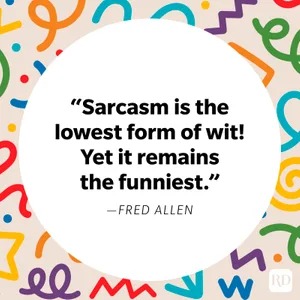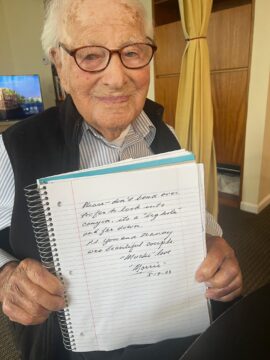A. S. Hamrah at n+1:
 Right away, Lee Isaac Chung’s Twisters won me over with a twist I did not expect: it killed off almost its entire cast of young STEM jerks in the first big scene. I’m so sick of these chipper teams of Spielbergian science kids in everything. Read a real book for a change. “Five years later,” they’ve been replaced by an alternative group of gnarly storm-chasing tornado wranglers—older STEM kids in disguise, but a slight improvement.
Right away, Lee Isaac Chung’s Twisters won me over with a twist I did not expect: it killed off almost its entire cast of young STEM jerks in the first big scene. I’m so sick of these chipper teams of Spielbergian science kids in everything. Read a real book for a change. “Five years later,” they’ve been replaced by an alternative group of gnarly storm-chasing tornado wranglers—older STEM kids in disguise, but a slight improvement.
The film borrows heavily from the classic Only Angels Have Wings playbook, in which an experience-hardened daredevil (Glen Powell/Cary Grant) tutors a skittish female newcomer (Daisy Edgar-Jones/Jean Arthur) in the ways of danger and adventure (filming tornadoes in Oklahoma/delivering airmail in the Andes). Powell as Hawksian man works fine, but Edgar-Jones, a Brit playing a New Yorkified Southerner who sounds like Anne Hathaway, never quite rises to the challenge of having a personality.
more here.
Enjoying the content on 3QD? Help keep us going by donating now.

 I
I T
T Around Christmas Eve 1955,
Around Christmas Eve 1955,  Genetic analysis of a Neanderthal fossil found in France reveals that it was from a previously unknown lineage, a remnant of an ancient population that had remained in extreme isolation for more than 50,000 years. This finding sheds new light on the final phase of the species’ existence.
Genetic analysis of a Neanderthal fossil found in France reveals that it was from a previously unknown lineage, a remnant of an ancient population that had remained in extreme isolation for more than 50,000 years. This finding sheds new light on the final phase of the species’ existence. I have difficulty interpreting the nature of my own life, a thing I feel intimately and continuously, so it’s not surprising that we can’t all agree on the nature of herons.
I have difficulty interpreting the nature of my own life, a thing I feel intimately and continuously, so it’s not surprising that we can’t all agree on the nature of herons. Love ’em or hate ’em, there’s a reason sarcasm quotes are all over the internet. Like funny sayings, sarcasm quotes play with the interpretation of words and tone in a way that can stretch your brain if you’re not expecting it. To use sarcasm, you have to say something that’s the opposite of what you mean (kind of like uttering a
Love ’em or hate ’em, there’s a reason sarcasm quotes are all over the internet. Like funny sayings, sarcasm quotes play with the interpretation of words and tone in a way that can stretch your brain if you’re not expecting it. To use sarcasm, you have to say something that’s the opposite of what you mean (kind of like uttering a  About a month ago, Judith Hansen popped awake in the predawn hours, thinking about her father’s brain.
About a month ago, Judith Hansen popped awake in the predawn hours, thinking about her father’s brain. The French philosopher Simone Weil was a soul at odds with herself and with a world of affliction. The causes she espoused as a social activist and the faith she professed as a mystic were urgent to her and, as she saw it, to humanity. Little of her work was published in her lifetime, but since her death, at thirty-four, in 1943, it has inspired an almost cultlike following among readers who share her hunger for grace, and for what she called “decreation”—deliverance from enthrallment to the self.
The French philosopher Simone Weil was a soul at odds with herself and with a world of affliction. The causes she espoused as a social activist and the faith she professed as a mystic were urgent to her and, as she saw it, to humanity. Little of her work was published in her lifetime, but since her death, at thirty-four, in 1943, it has inspired an almost cultlike following among readers who share her hunger for grace, and for what she called “decreation”—deliverance from enthrallment to the self.